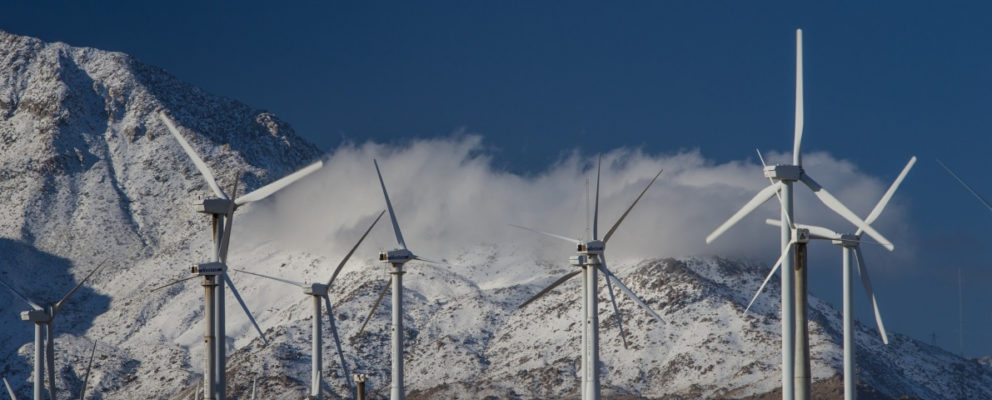Transmission lines carry improvements to local air quality.
By Silke Schmidt
In the last decade, wind energy has taken off in the United States, but most of it is generated in sparsely populated regions. Having sufficient electricity transmission capacity is thus essential for transmitting clean electricity from its origin to densely populated areas with high energy demands.
An increase in the grid’s transmission capacity may also boost the environmental value of wind energy. As transmission capacity increases, wind generation is more likely to offset generation (and emissions) from fossil fuel plants near demand centers. The environmental damages from emissions in these population hubs are greater than in remote areas. For example, the aggregate human health benefit that stems from wind energy displacing fossil fuel energy in the densely populated Houston area is greater than in a rural West Texas county.
 Quantifying the boost in the environmental value of wind energy from uncongested transmission networks was the goal of a recent study by CEnREP Interim Director Harrison Fell and colleagues at UC Davis and the University of Colorado Boulder.
Quantifying the boost in the environmental value of wind energy from uncongested transmission networks was the goal of a recent study by CEnREP Interim Director Harrison Fell and colleagues at UC Davis and the University of Colorado Boulder.
“Neither emission damages nor emission sources are uniformly distributed across the country,” says Fell, an associate professor in the Department of Agricultural and Resource Economics at NC State. “By accounting for this spatial heterogeneity in our analysis, we can more accurately estimate the non-market value of wind energy and how it changes when the electricity grid is congested.”
In their empirical analysis for the period 2011 to 2015, the authors analyzed the country’s top two markets for wind generation: the Electric Reliability Council of Texas (ERCOT) and the Midcontinent Independent System Operator (MISO) markets. First, the researchers calculated the total environmental damages associated with power-sector-derived emissions of CO2, SO2, NOx and fine particulate matter (PM 2.5) for each market area. They multiplied plant-specific emissions of these pollutants by county-specific emission damages, derived from the oft-cited AP2 model and EPA’s social cost of carbon analysis.
Then, regional electricity prices, provided by the market operators, were used to measure the level of grid congestion. By combining these data with market-level wind generation, the researchers analyzed how wind generation affected total damages with and without grid congestion.
For ERCOT, the researchers found that wind generation was 31% more environmentally valuable when the grid was uncongested, primarily because of reductions in local pollutant (SO2, NOx, and PM 2.5) damages. More specifically, the non-market value of wind energy increased from $40 per megawatt hour during grid-congested hours to $53/MWh during uncongested hours. For MISO, wind generation was 13% more valuable during uncongested periods.
Fell and colleagues also applied these findings to determine the non-market value of a $7 billion transmission project in ERCOT that increased the transmission capacity from the wind-rich western region to the demand-rich eastern section of the market. They found that the upgrades boosted the environmental value of wind energy by an estimated $240-450 million per year, with about 75% of this value due to decreased damages from local pollutants. This number is similar in magnitude to the market benefits estimated by other researchers.
“We believe this is the first econometric study to quantify the effect of transmission constraints on the non-market value of wind energy,” Fell says. “Our results indicate that the alleviation of grid congestion, either by siting new wind generators closer to population centers or by increasing transmission capacity, will be key for obtaining the highest market and environmental value from renewable energy resources.”
